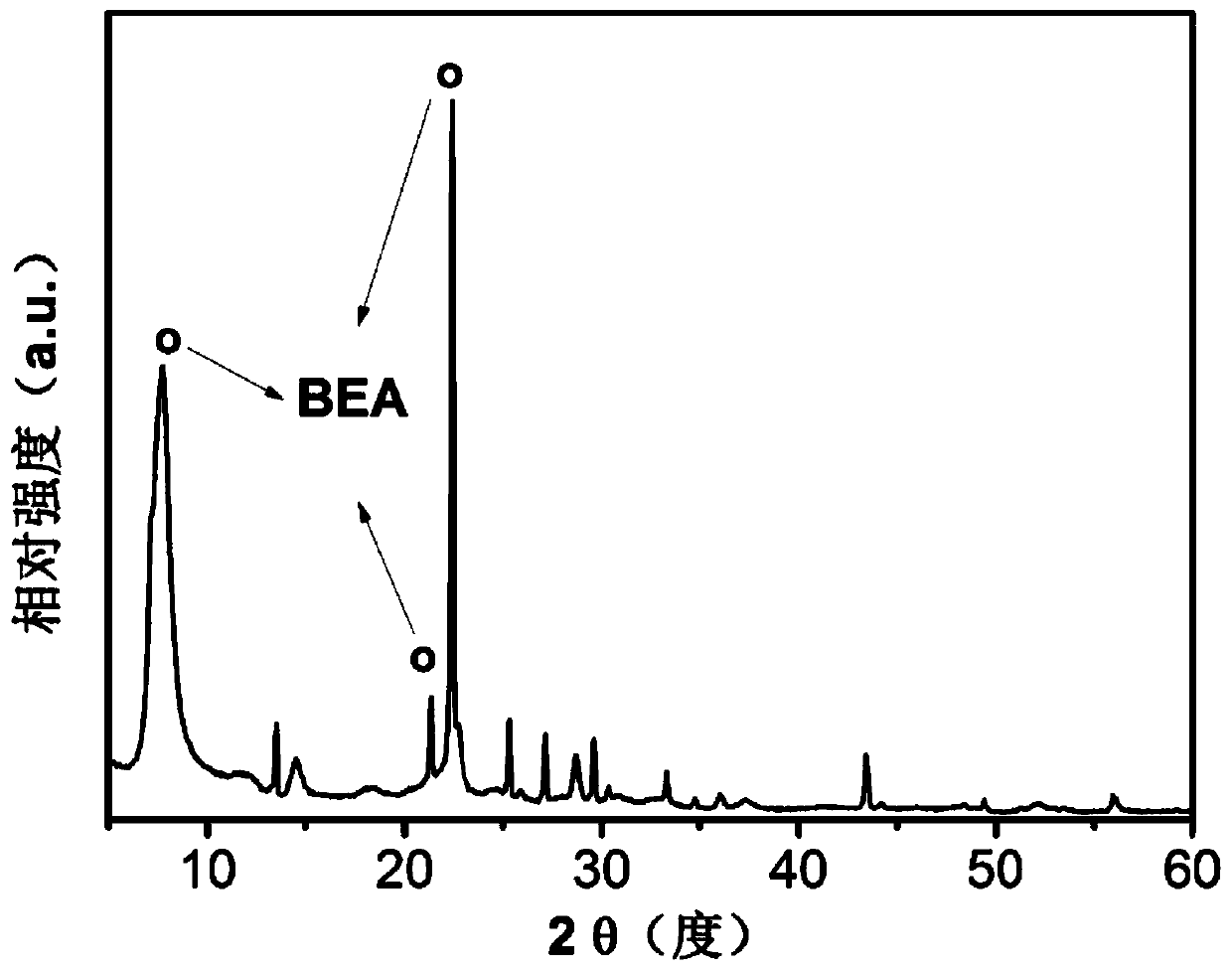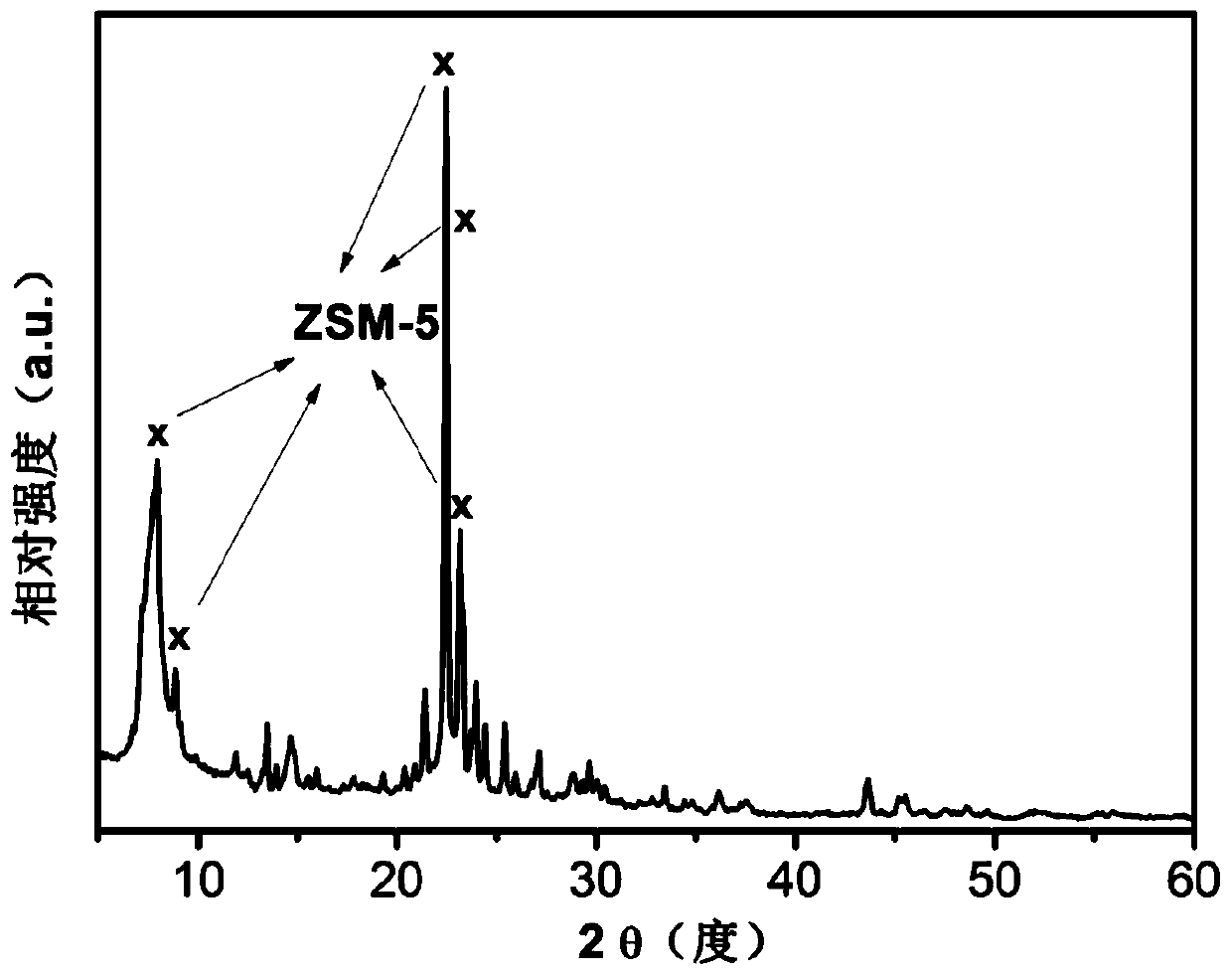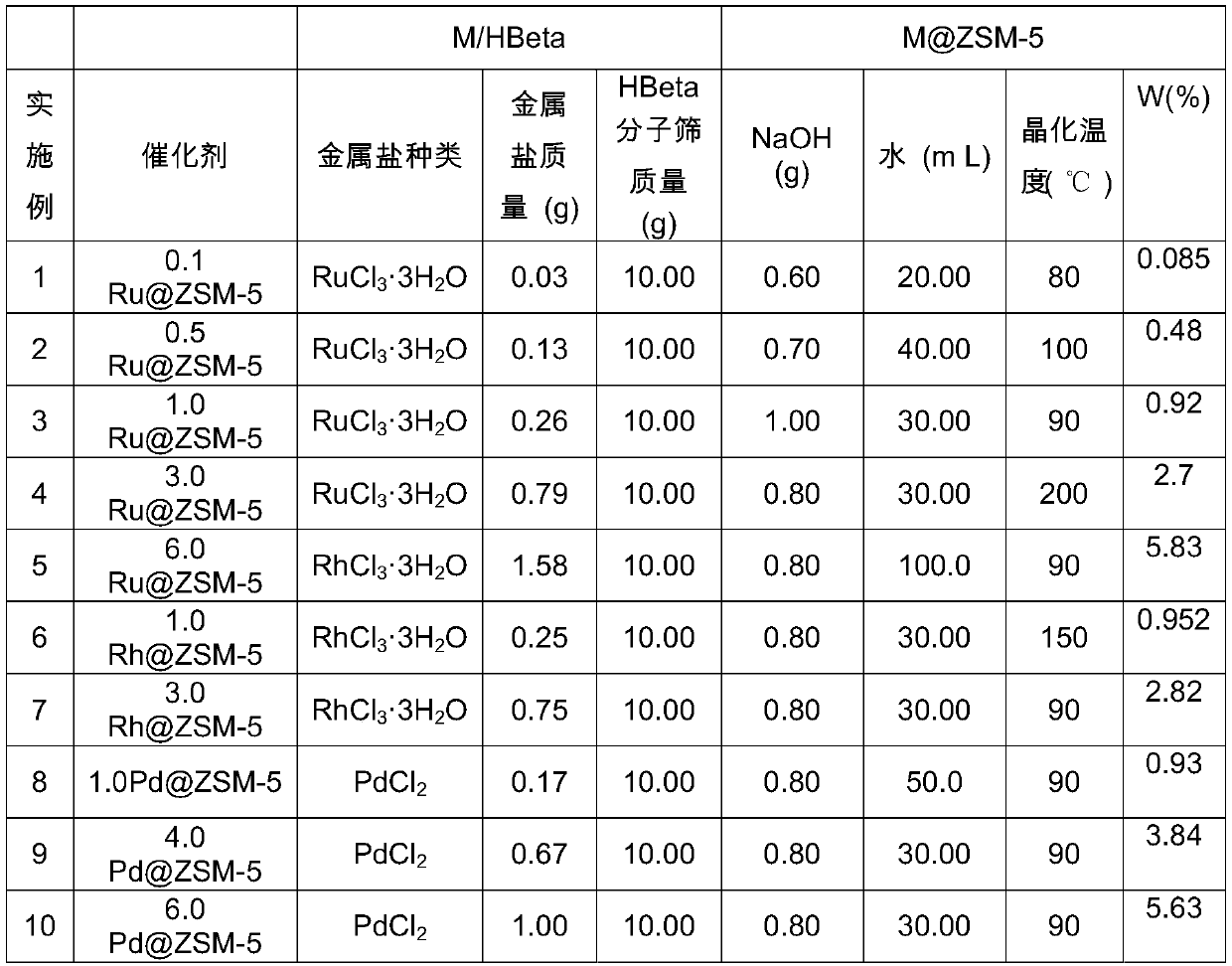Method for preparing hexamethylenediamine
A technology of hexamethylenediamine and adipaldehyde, which is applied in the field of preparation of hexamethylenediamine, can solve the problems of high toxicity of adiponitrile, dependence on imports, high price, etc., and achieve the effect of improving selectivity, catalyst stability and cleaning route
- Summary
- Abstract
- Description
- Claims
- Application Information
AI Technical Summary
Problems solved by technology
Method used
Image
Examples
Embodiment 1
[0086] The preparation of embodiment 1 metal@molecular sieve catalyst
[0087] (1) 0.03gRuCl 3 ·3H 2 O was dissolved in water, and the volume was adjusted to 12mL, and 10g of HBeta molecular sieves (SiO 2 / Al 2 o 3 Molar ratio = 800, SiO 2 The mass content is 98.9%), the Ru element is loaded on the HBeta by the equal volume impregnation method, placed in a 100 ° C oven for 12 hours, and then placed in the HBeta 2 Reduction at 500°C for 4 hours in the atmosphere to obtain a negative metal Ru / HBeta molecular sieve;
[0088] (2) Place the metal-loaded Ru / HBeta molecular sieve in 15 mL of TPAOH aqueous solution with a mass fraction of 35.0%, immerse at room temperature for 2 hours, and dry in an oven at 100° C. for 12 hours to obtain the / HBeta molecular sieve with TPAOH adsorbed in the pores;
[0089] (3) Mix the / HBeta molecular sieve with TPAOH adsorbed in the channel with 0.60g sodium hydroxide and 20mL deionized water, and crystallize at 90°C for 6 hours to obtain Ru@ZS...
Embodiment 2-10
[0092] The preparation of embodiment 2-10 metal@molecular sieve catalyst
[0093] The same steps in Example 1 were used to prepare M@ZSM-5, and the metal type and loading amount were adjusted by changing the type and concentration of the metal salt solution. The specific synthesis conditions are listed in Table 1. The mass content of metals in M@ZSM-5 was tested by ICP-OES.
[0094] The specific synthetic conditions of each embodiment of table 1
[0095]
[0096] In the table, in the catalyst nA@ZSM-5, A represents noble metal, ZSM-5 is the abbreviation of HZSM-5, W(%) represents the mass content of metal in M@ZSM-5, n represents the mass loading of precious metal in M / HBeta molecular sieve quantity.
[0097] Embodiment 1-10 Characterization of metal@molecular sieve catalyst
[0098] figure 1 It is the XRD spectrogram of the HBeta molecular sieve used in Example 1; the catalyst obtained in Examples 1 to 10 is a ZSM-5 molecular sieve, and a typical representative is as ...
Embodiment 11-20
[0099] Reaction Performance Evaluation of Embodiment 11-20 Metal @ Molecular Sieve Catalyst
[0100] Put 5.0g of catalyst into the quartz tube, pass reducing gas into the tube at a flow rate of 30mL / min, and reduce the catalyst at 400°C for 4h, wherein the reducing gas is formed by H 2 / N 2 Composition by volume ratio 1 / 4. After the reduction was completed, it was lowered to room temperature, and the catalyst was taken out and added to a 300ml autoclave.
[0101] At room temperature, mix 20g of adipaldehyde and 100g of methanol evenly, add it to the 300mL autoclave, seal it, replace it with nitrogen three times, inject 29.75g of liquid ammonia through a high-pressure pump, and fill it with hydrogen until the pressure in the autoclave is 4.0Mpa , raised to 120°C, at this time the pressure reached 7.5MPa, the temperature was rapidly lowered after 2 hours of reaction, the catalyst was separated by centrifugation, a certain amount of n-octylamine was added, and gas chromatograph...
PUM
 Login to View More
Login to View More Abstract
Description
Claims
Application Information
 Login to View More
Login to View More - R&D
- Intellectual Property
- Life Sciences
- Materials
- Tech Scout
- Unparalleled Data Quality
- Higher Quality Content
- 60% Fewer Hallucinations
Browse by: Latest US Patents, China's latest patents, Technical Efficacy Thesaurus, Application Domain, Technology Topic, Popular Technical Reports.
© 2025 PatSnap. All rights reserved.Legal|Privacy policy|Modern Slavery Act Transparency Statement|Sitemap|About US| Contact US: help@patsnap.com



